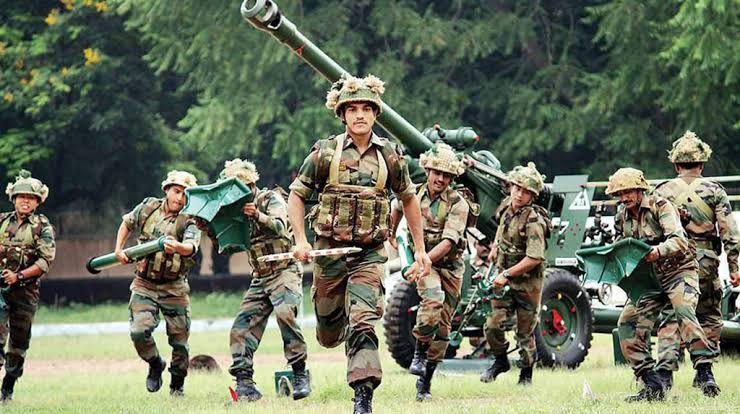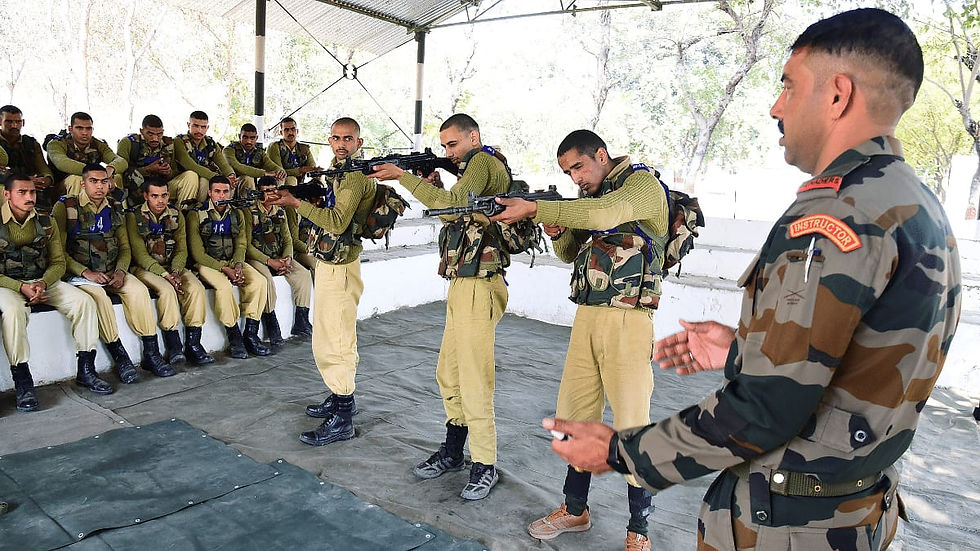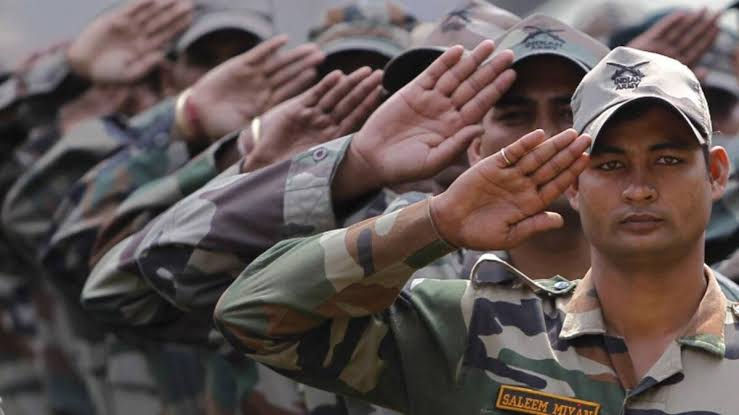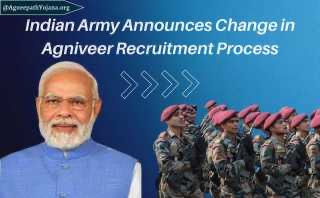EDITOR'S NOTE
The Agnipath ( Agniveer ) Scheme and connected issues has been a very controversial subject hotly debated by veterans across ranks of three services especially the Army ever since the Govt announced this scheme and the armed forces implemented it. There have been reservations and apprehensions in the minds of most veterans about the success of this scheme. Most veterans feel that it has not been adequately thought through about the adverse and long-term implications and feel that it would consequently reduce the cutting edge of the military, especially of the Army. However, some veterans strongly argue in favour of this scheme and advocate its implementation to effectively meet the challenges of modern warfare. MVI has received some interesting responses from our senior veterans who have held high posts in the armed forces. These are published below. Their views will collectively reveal what the veteran fraternity generally feel or perceives about this scheme.
It is up to the readers to form their individual opinions and reach their own conclusions. We earnestly hope that our military and political leadership that is dealing with the Agnipath Scheme gain from these insights and take the right decisions in the highest interest of the armed forces and nation.

GP CAPT TP SRIVASTAVA
Agniveer is not only a military liability. It has become a political liability. Already written to the PM to abolish the scheme. Let national security not be counted in pennies. In current elections, NDA lost UP, HARYANA, AND RAJASTHAN due to this reason apart from caste and religion. First-hand experience of travelling central and East UP thrice during March and April. Nitish is also opposing the Agniveer issue.
Also, the discussion on the Agniveer issue has been hijacked. The issue is that due to the false narrative extremely successfully spread by the opposition, it is now a political liability. My personal view was and remains that it is a military liability. Finances and their utilisation are a secondary issue under the present scenario. Govt was/is not interested in addressing the military liability issue, but it will address the political liability issue. Three states are due for assembly polls in about 200 days from now.
LT GEN HARMINDER SACHDEV
Agniveer is a dead horse now!
In the near future, the discard rate is likely to be reduced to 25% if not 10%.
As and when that happens, the very same veterans who were singing praises in favour of the scheme will be required to be critical of the reduction! The tables would have turned completely .. time to cool off.
CDR RAVINDRA PATHAK
Yes, they fall by the side due to the pyramid, but they get life sustenance pension and, more importantly, Medicare. Agniveers 75 % out after 4 years and on the street. Not a very happy future. Ask EC and SSC officers who, despite being educated, had to struggle.
Watch the fun when 75 % of Agniveer are with cash in hand, most will soon be bankrupt and many will become mercenaries in or outside the country. Punjab is ripe to absorb them.
COL VIJAY BHATE
The fact that the author accepts that Agniveer is not perfect and needs modification or relook is a good admission. Hope it is modified in a way that is advantageous to both armed forces and Agniveers.

COL RAJINDER KUSHWAHA (AUTHOR) REPLIES
I appreciate the issue raised. But I have answered that there was a solution which would come out of discussion.
However, I have three points:—
1. How did “ reservists” survive in the past? They had no pension.
2. Released Agniveers would get ₹ 14 Lacs as compensation to upgrade their skills and find a better job.
3. In any case, there is a proposal to induct them laterally into PMFs, which should satisfy this concern.
Also, there is a proposal to extend service by 3 years — making it 5 plus 2. The last two years of non-retention be used to enable oneself for a civil job.
Large standing army were no answer for future wars. Technology will make manpower-heavy armies meet the same fate as of Saddam Hussain's army, which collapsed in 60 hours in the Second Gulf War. Today’s technology has advanced far too much. And it is getting more sophisticated day by day. AI is playing havoc with nations and their war machines.
LT GEN HARBHJAN SINGH
AGNIVEER has now become a political issue. Those who rammed it in and gave false justification have to take the scheme back. Fighting units are facing problems as to how to use them.
There are two sets of soldiers to be employed. ASK THE young officers, JCOs, and NCOs
We the uniformed have to look at it from the COMBAT angle. Any such wrong policies result in CASUALTIES, and DEFEATS.
The soldier is the one who fights with bayonets, grenades, bullets, and attacks through minefields with air-burst shells bursting overhead.
THE BEST TRAINED AND MOTIVATED SOLDIER is needed.

THERE SHOULD JUST BE NO COMPROMISE. 4 years, 6 years of service, and 25 or 50% retention are not the answer.
The politicians need to be told "APNE BACHE AGNIVEER BANAO AUR PHIR BAAT KARO!"
LT GEN HARMINDER SACHDEV
I totally agree with Lt Gen Harbhajan Singh ....all the discussions have been conveniently shifted from 'Agnipath' to 'Agniveers' !! We should be looking at operational effectiveness and not towards the rehabilitation of Agniveers.
Armed Forces are not employment agencies ..... as per all estimations agniveers will be around 40% of the total strength in the next 10 years ..... Imagine 40% with an average service of 2 years in any combat unit !! and without any specialist training!
As far as compensation is concerned ... here is the fact ...... the difference between the pay of a soldier recruited in the normal course and an agniveer is approx. 17000 plus minus ..... calculate the total savings in 4 years with a compound interest of anywhere between 12-15 % ( which mutual fund would give in SIP mode) and you get around 11 lakhs !!! so basically govt is giving nothing from its side !!!
Lastly, a lot is being said about technology, cyber, AI etc ..... in the first 4 years, no agniveer would be involved in any of the above aspects !! Expertise in the said domain is more important which comes with longer service .... so the hype of better tech-savvy people are going to be attracted is misplaced because they will be on their way out in 4 years!
There are others who propogate about ‘this is not the era of wars’ and therefore such high expenditure is avoidable by such schemes …. To them I can remind that Nehru thought likewise and the price was paid by the soldiers therefore it is time credence be given to what the soldier has to say about this scheme modify it to 90% retention ….. the military heirarchy is well advised to suggest likewise and not try to suggest 50% as reliably learnt.

LT COL MK GUPTA RAY ( CONCLUDING RESPONSE & WAY AHEAD)
Agnipath has drawn wide-ranging comments, both for and against, from various segments of thinking citizens. It was a completely sudden and unexpected concept not matching with ethos and tradition of the army profession covering over two and half centuries and having an imprint in most of the world. Army fights and dies as one. There is no other religion but unity. There is no classification based on cast, creed and religion: all are one. But how is it achieved? It is achieved by following the century-old tradition in which one gets imbued the day he joins and it's a gradual process taking a long period of time and training passed on from senior to junior. Even when he comes home after his colourful service, he carries it. That is how a soldier covers his buddy, under threat, physically by his own body. May be by sacrificing himself if required. He will carry the body, dead or alive, if required to safety. How that happens; is by living together, going through the same rigour for a long time and creating a sense of oneness. This cannot obviously be inculcated in a four-year apprenticeship, by that time it would not achieve even full training and maturity when leaving the unit after four years of his contractual job!!!

Now why did the government do this? First and foremost, most or all of the top-level decision makers in India have had no experience, unlike many other countries, any knowledge or experience of army functioning. They seem to have counted the money, not 'national security'!!
In yesteryear, the size of the Army was much smaller, other than wartime drafting. The defence aspirants used to come from an agrarian background and get back to family farming once active service was over. There was not much transitional problem.
With the social evolution, shifts in the scenario situation started changing. India inherited a large standing army with two volatile and aggressive neighbouring countries, who drew their sword many times against India, which compelled India to go for all-round developments of defence services, including raising the army strength commensurate to increasing defence responsibility: at a cost!
The peculiar nature of defence services needed a younger profile in the army with early retirement. Maintaining that also is at a cost.
Gradually, there started a demographic change in the defence services. From rural-based recruitment, job necessity made urban youth joining the army.
Before introducing Agnipath, a system of reemployment in the army to offset the early retirement, to some extent, got settled, which was running somewhat satisfactorily. To ease the situation, colour service was, sometime back, extended by two years, and various other post retirement settlement policies and programmes were introduced. But at the same time in the same chronology, in1973, after winning the 1971 legendary war, as a tribute to Indian Defense Services, Govt of India reduced the pension ratio from 75% to 50% and raised the pension of the civil correspondingly to 50% as a gift for winning a war!!!!! The government, however, didn't clarify as to whom this gift was intended for. However, so far, things were going OK.
2 . Now comes Agnipath, again a gift to the army for its various actions in upholding the security and honour of his country. It's a bunch of young recruits who would be recruited in the army for four years, go back as a civilian as a half-trained soldier without any stake in society, and may be fully frustrated. I wonder how will 75% of raw recruits will face the bullets in time of war! How will they be a buddy and uphold regimental and national honour! Their status will be that of temporary workers in an industry. After a couple of years, I am sure a company will have 75% of half-trained demotivated soldiers with a frustrated officer cadre. After a few years, every year, thousands of untrained and disoriented young recruits will come out in this hostile world with some cognisable sum of money, falling pray to crooks and ultimately most of them may turn out to be half-baked products and some of them threat to the nation and Society.
3 . Whatever might be the advancement of weaponry ultimate victory will depend on physical holding of the ground. That needs strength, courage, discipline motivation, getting over fear, endurance and tribulation.
The BIGGEST fallout is that we are losing one of the prestigious regiments, i.e., the Gurkha Regiment. A day may come when we may be fighting against each other. I request the authority not to break the homogeneity of the army for saving a few rupees. We seem to be going back to the 1962 era when saving money was a greater criterion than the safety and security of the country.
In the end, I ask a simple question: Why such a dreadful policy like Agnipath was not introduced in other security or civil services under the Home Ministry? Because the Govt could not dare.
PLEASE Don't barter the safety and honour of the country for a few rupees and so-called political gain.


댓글